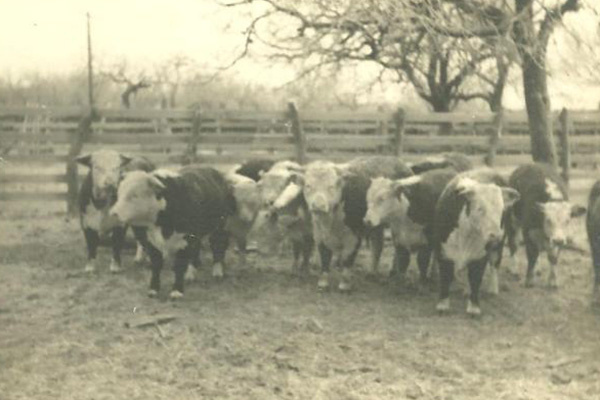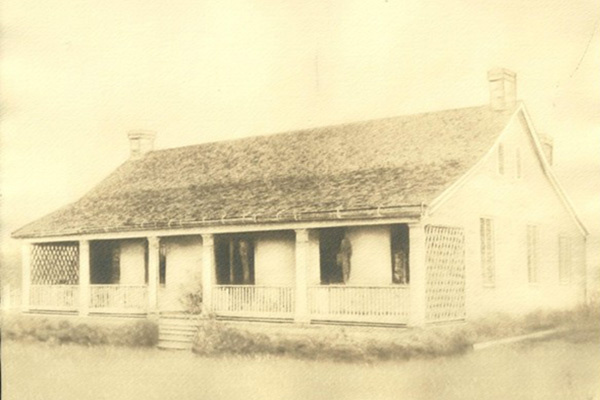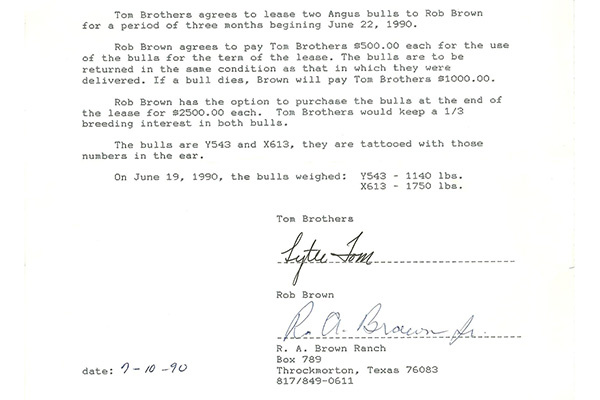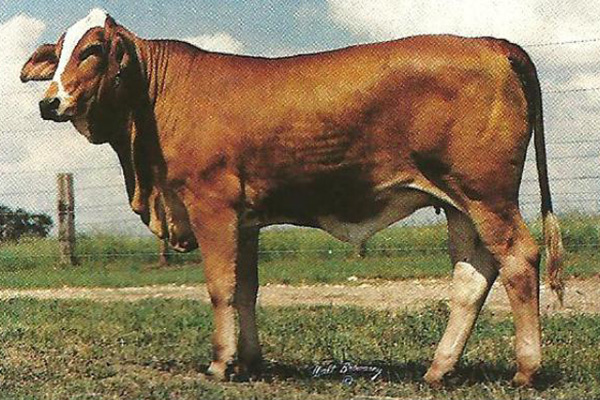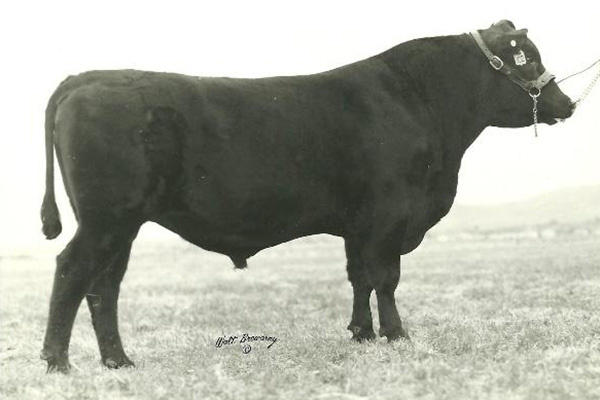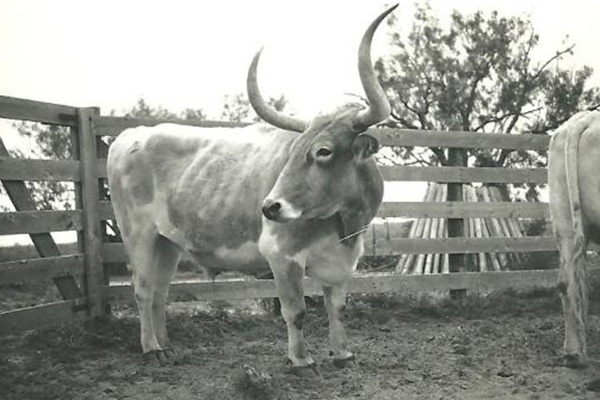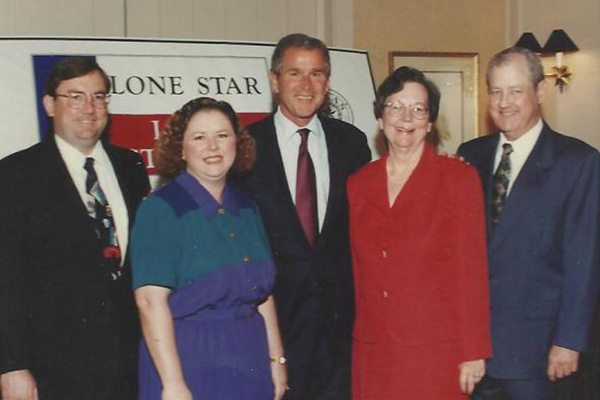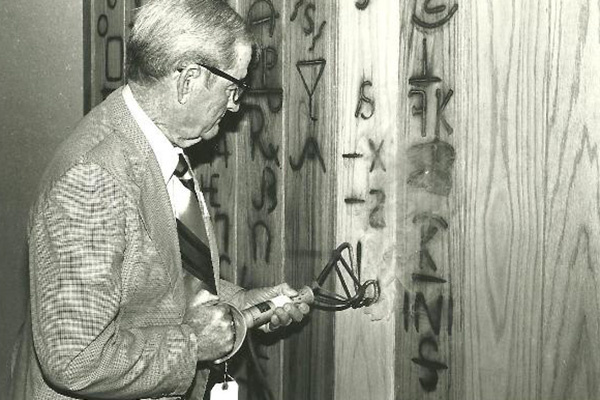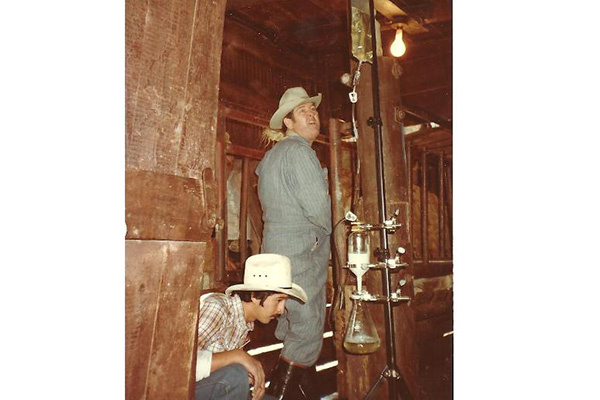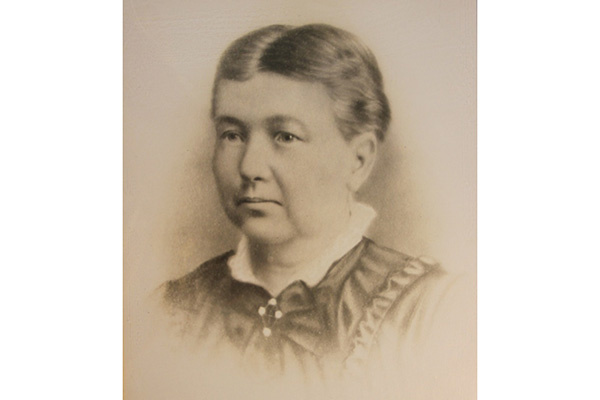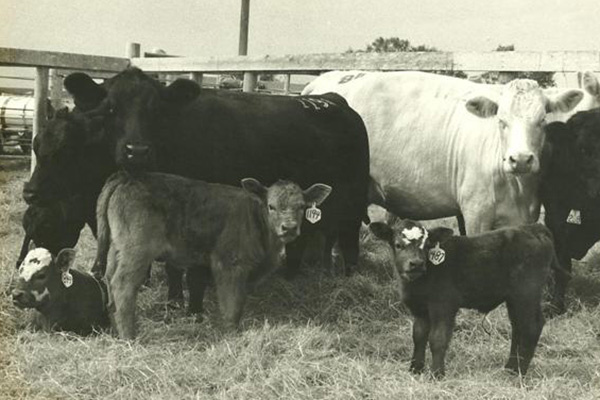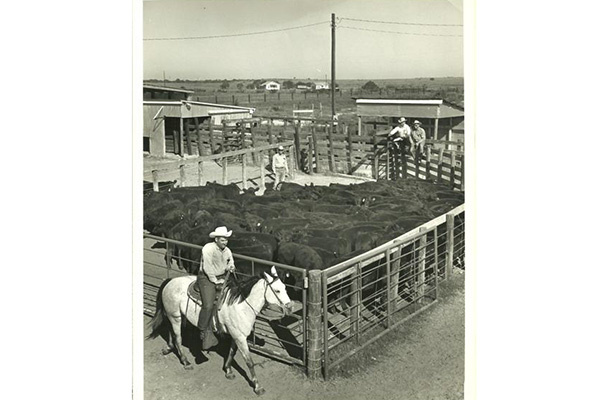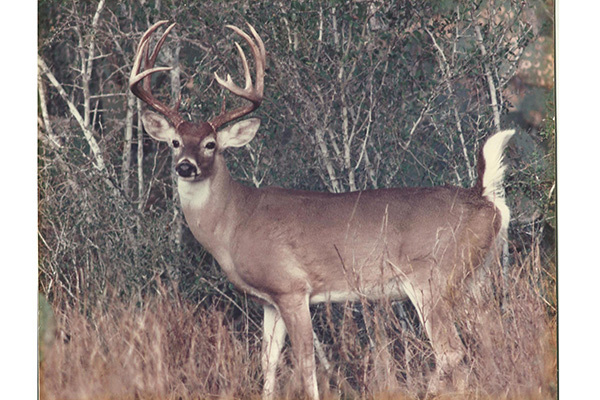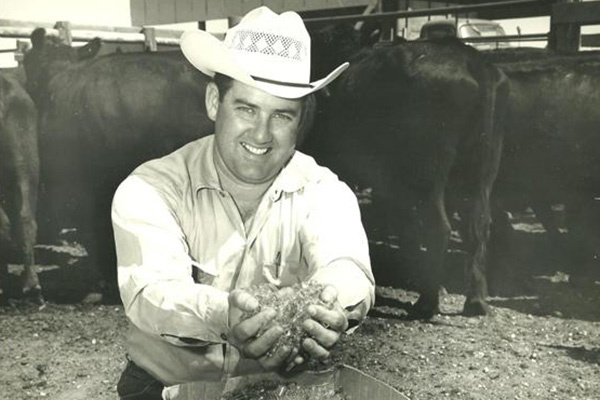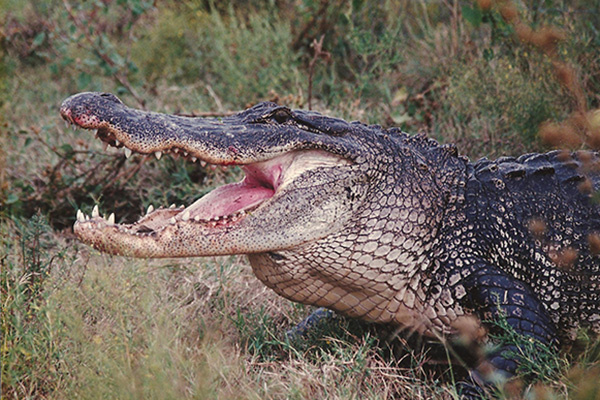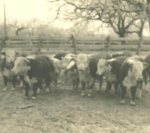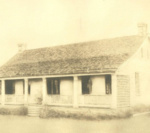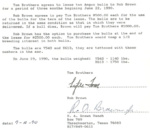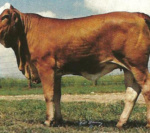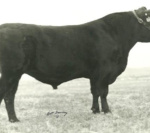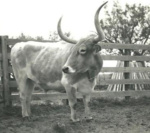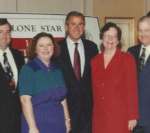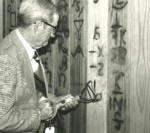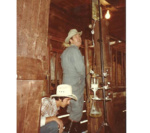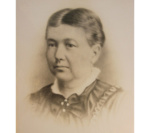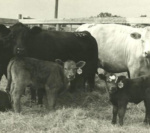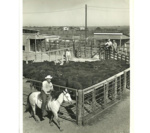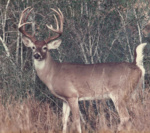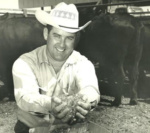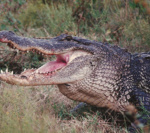Beginnings
The Tom family story begins in Northern Ireland in 1790 when William Tom (b. 1762) along with his wife and two young children immigrated to the United States to settle in South Carolina. William never bought land in South Carolina but he did stay long enough to help his father-in-law establish his farm and in 1806 he moved his family to Bourbon County, Kentucky. Then a few years later he moved again to Maury County, Tennessee.
William Tom II, (b. 1792) second son of William Tom, fought in the War of 1812 and returned home to Tennessee to continue with his father’s farm but misfortune struck several times. Amid the sorrow and discouragement there was much talk in the area about the prospects of immigration to the Texas province in Mexico. At the time the Mexican government was encouraging Anglo-American settlement. In 1834 William began acquiring the necessary documents to immigrate to Texas and in 1835 he and his family were finally on their way to Texas. They began their journey in Texas in Brazoria and traveled with a wagon train of other colonists to San Felipe de Austin.
After the “Come and Take It” skirmish in Gonzales, William and his oldest son John Files Tom (b. 1818) joined the Texas volunteers in October 1835. The volunteers met at Gonzales and William and John Files were among the legends of Texas history such as Stephen F. Austin, Sam Houston, James Fannin, Jim Bowie and Deaf Smith. William and John Files then went with the Texas army to Bexar to engage the Mexican army and capture San Antonio. On December 5, 1835 William and John Files began the siege of San Antonio under command of Colonel Ben Milam and on December 11 the Mexican army surrendered. William and John Files remained in San Antonio garrisoned at the Alamo with 100 other Texan soldiers. Colonel William B. Travis arrived at the Alamo on February 11 with his troops to relieve troops stationed there. With the arrival of Travis, William and John Files left for home. Just twelve days after William and John Files’ departure from the Alamo Santa Anna’s army arrived in San Antonio.
After the fall of the Alamo, General Sam Houston called for all volunteers to join the Texas retreat to East Texas. William chose to stay at home with his family and John Files met up with the volunteers on the Colorado River. The Battle of San Jacinto soon followed and John Files was one of thirty soldiers wounded that day. He was hit in the leg by a musket ball which shattered his left leg below the knee. He fell in a muddy ditch and packed his wound with mud to stop the bleeding. After the battle fellow comrades found him and carried him back to camp. In 1846 William Tom along with John Files and the rest of the family relocated to Seguin and transitioned from a farming family to ranching.
The Tom Ranch Beginnings
William Tom II’s second son, Charles (b. 1819) married Ellen Campbell (b. 1837) in Seguin in 1853 and the couple remained in Seguin for several years after their marriage. In the spring of 1857 Charles and Ellen moved to an area in which the little town of Campbellton eventually grew. Charles found ranching in Atascosa County a profitable business and soon employed an Irish stonemason to build a rock home for them on the ranch. They had trouble keeping the stonemason sober long enough to complete the house, but when it was eventually finished in 1867 there stood a solid, six-room house with stone walls twenty-one inches thick. The parting words of the stonemason to Ellen were “Madam, this house will stand here to be used by your great, great grandchildren” which is the generation currently occupying the house. Shortly after the ranch home was built Charles was gored by a Longhorn. Many wondered what would become of Ellen and her five children left on an isolated frontier. Despite the dangers and hardship of her situation Ellen decided to stay on at the ranch and manage it herself even though the constant threat of Indian raids and cattle stampedes always loomed. Over the years that followed she proved herself to be a remarkable business woman. She continued purchasing land and at her death she owned 20,000 acres of south Texas ranch land. Buyers seeking to purchase her longhorn herds to trail north could only pay in gold, as that was Ellen’s policy. After each transaction she would drive her buggy, escorted by two armed guards, up to San Antonio to put the gold in a bank.
Depression, Fever Tick, and Drought
The days of cattle drives and Longhorns were over and Ellen’s son C.T. (b. 1859) along with his wife Ada Brown Tom (b. 1869) were managing his portion of the ranch that was left to C.T. He passed away a few years before the “Great Depression” hit . Hereford cattle were raised and crossed with the remaining longhorn cattle to produce a more desirable beef product that the industry demanded. Then came the Great Depression and it was all his second son, John “Lytle” Tom (b. 1907) could do to keep the ranch going along with his mother’s guidance. Many other descendants of Ellen had to sell their land to stay afloat during the depression.
Along with the hardship of the Great Depression was the Texas Fever Tick. The Longhorn cattle had an inherent ability to withstand the fever tick but the Hereford cattle didn’t fare so well. Many Hereford cattle on the ranch were lost due to the fever tick until the eradication program was able to take full effect. The dipping vats on the ranch are still present today.
If the Great Depression and fever tick wasn’t enough bad news, then came the long lasting drought of the 1950s. Rain records from the ranch show that in the years of 1954-1956 the average rainfall per year was 12.5 inches. The cowherd had to be drastically reduced.
Angus, the Continental Invasion, and Innovation
In 1958 Lytle Tom’s only son, also named John “Lytle” Tom (b. 1936) came home from attending college at the University of Texas and was ready to make his mark on the family’s ranching enterprise. His first task was to convince his father to switch from Hereford and Hereford crossbreds to Angus. He had heard of the superior carcasses that the Angus produced and that the breed had won 94% of carcass competitions at the International Livestock Exposition. His thought was “Since the ultimate goal is to raise cattle for people to eat, why wouldn’t you breed Angus?”
The switch from a commercial operation to a registered Angus herd was made in 1961. In 1963 Lytle Jr. attended a school for artificial insemination and was among the first in the country to implement AI into a beef cow herd. His desire to “breed a better steak” led to him serving on the Beef Improvement Federation’s Sire Evaluation Committee that originated EPDs for beef cattle. Many gain tests, experiments, and research trials on estrous synchronization were carried out on the ranch in cooperation with local extension services and Texas A&M University. In 1981 embryo transfer was experimentally used as a means to propagate the genetics of superior cows on the ranch.
From the period of 1961-2000 the ranch primarily raised Angus seedstock while experimenting with other breeds of cattle. During the late 1960s Continental breeds were being imported from Europe and took the beef industry by storm with their rapid growth and muscling. Lytle Jr. was among the first to cross the Continental breeds with Angus. Charolais, Chianina, Limousin, Maine Anjou and Simmental were all crossed with Angus cows in pursuit of a better beef carcass. Later in the 1990s Braunvieh was crossed with Angus cows. Of all the breeds Lytle crossed with an Angus, the Simmental-Angus F1 proved to be his favorite.
In the 1980s the Simmental breed came to the forefront of the beef industry again, as well as the Simbrah. To diversify the ranch, the finest Simmental and Simbrah cattle in the country were acquired to add to the established Angus herd. Much of the current Simbrah herd can be traced back to those key purchases. However, in the late 1990s Simmental and Simbrah began to fall out of favor with the beef industry while the Angus breed’s popularity soared. The Simmental cows left were used to cross with Angus bulls to make SimAngus cows to be used as recipients for Angus embryos. The Simbrah herd was maintained to breed show heifers for Philip and Ellen to use as 4-H projects and compete in the American Junior Simmental Association’s national shows.
Dispersal, A New Generation, Rebuilding
In October 2000 the 600 head Angus herd that contained 37 years of continuous AI breeding was dispersed. The remaining cowherd that was left was SimAngus, Simbrah, and Angus females born from recipients after the sale. The cowherd was managed commercially and was drastically reduced during the droughts of the 2000s until Philip (b. 1976) and Ellen (b. 1984) returned to the ranch to take over management and leave their mark. In 2007 Philip and Ellen made the decision to rebuild the registered cowherd and chose SimAngus and Simbrah because of the growing popularity of SimGenetics in the industry and the innovative performance and science driven programs of the American Simmental Association.
SimAngus and Simbrah seedstock are produced from an intensive artificial insemination and embryo transfer program with a focus on producing genetically superior cattle adapted to the hot and humid climates on the Gulf Coast. Innovation and the quest to raise superior are still at the core the of the Tom Brothers Ranch mission, with the cowherd enrolled in multiple research projects with universities and the American Simmental Association.
The Tom family remains committed to the cattle industry and while the history is rich, they look to the future and their impact on the 21st century of cattle genetics.
Ranch Bios…
 |
Ellen Tom represents the sixth generation of Tom Brothers Ranch. Her interest in the ranch began as a young tot when she loved going to check the “cinnamon top” (Simmental) cows with her dad, John Lytle Tom III. In her early teens she began helping out with work on the ranch along with raising Simbrah and Angus heifers for show. Ellen attended college at Texas A&M University and graduated in 2006 Magna Cum Laude with a Bachelor of Science in Animal Science and in 2008 with a Master of Agriculture in Leadership and Development. While an under-graduate she was a member of the 2004 National Champion Intercollegiate Meat Judging team and a member of the 2006 Intercollegiate Meat Animal Evaluation team. After receiving her Master’s degree she returned to work on the family ranch. She served as an adult adviser to the Texas Junior Simmental Simbrah Association for nine years. Ellen was instrumental in creating the San Antonio Stock Show & Rodeo’s Beef Skill-a-thon which had its inaugural contest in 2011. In 2010 Ellen was selected by the American Simmental Association as a young breeder representative to attend the World Simmental Congress in Australia and New Zealand and was selected again in 2013 to be the representative on NCBA’s Young Cattleman’s Conference tour. She has been a guest speaker at Texas A&M’s Beef Cattle Short Course and serves on the Department on Animal Science’s advisory council.
|
||
 |
Philip Tom is the fifth generation of Toms to work on the ranch. Philip’s interest in cattle began at a young age while working with his father, John Lytle Tom, Jr. He began his work on the ranch as a young teen along with showing Simmental, Simbrah, and Angus heifers. He attended Texas A&M University and graduated in 1999 with a Bachelor of Science in Agricultural Economics. While an under-graduate, he served as president of the American Junior Simmental Association. Philip serves as a director on the boards of the El Oso Water Supply Corporation and the Atascosa County Cattlemen’s Association. In 2017 Philip spearheaded the introduction of a junior commercial heifer show in Atascosa County. | ||

